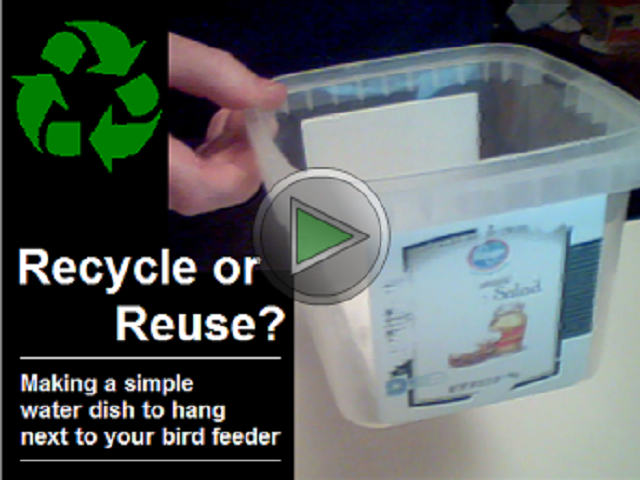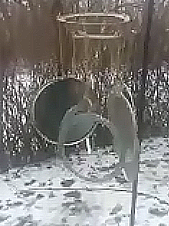Compost
Composition
It doesn't take much to make your own mulch and fertilizer
and save money, too!
What
it is: Simply put, compost is decaying organic
material (plants, animals). It's nature's fertilizer!
Benefits:
Compost is great for flower beds and the garden
Compost is recycling materials that could otherwise end
up in yard-waste recycle bags and landfills.
Ways
to do it: Compost piles, compost
bins, compost containers.
•Compost
piles are simply organic "garbage
dumps."
•Compost
bins are open structures often made
from wood, chicken wire, and/or recycled plastic.
•Compost
containers are closed composters, usually
box shaped or rotating drums.
Pros
and cons:
Compost piles area easiest to make but can be an eyesore
(and not to mention the nose!). Compost bins easily collect
rain water and are easy to add items but can attract rats,
raccoons, bears, bees, flies and can also be an eyesore
(and nose-sore!) Compost containers rarely attract pests
and are generally inoffensive in appearance but usually
require you to add water and are more difficult to add
items. Rotating drums are easier to mix and unload, while
upright containers may be more difficult to mix and unload.
Before you begin: Don't just
start throwing garbage in a heap somewhere! — Do a Web
search for "How to compost" (or ask your local
home center) to find out what's best for you and all the
steps and tools you'll need to do it right! |
How
To Repurpose a Plastic Container as an Outdoor Bird Water
Dish. 
(See
the video on Go
Green! p. 10.)
All
you'll need for tools is a pair of pliers with a wire
cutter or pliers and a wire cutter and a lightweight
drill or sharp nail or corkscrew, etc. For materials,
you'll need a clear plastic dish (like a 3-pound salad
dish from the deli department) and one or two wire hangers
(sorry, Joan!), the second one works best if it has the
cardboard cylinder between its two wire sides. Chico
accent: "Wire hanger?" — To hang the water
dish next to your bird feeder! The video takes you through
construction, step by step. Just click the link above
or the image to the right.
|
| Things
To Recycle
Here are some items you might not think to recycle each
time you're done with them:
•TV-dinner boxes. Break down, flatten,
and toss the box into your paper recycle bin as soon as
you open it!
•TV-dinner "plates." Toss the
plastic dinner containers in the dishwasher and then the
plastic/glass recycle bin when clean and dry.
•Nuts cans. Clean out and then toss those
round cardboard & aluminum nuts containers into the
cans bin. (If you're really into recycling, separate the
cardboard part first and put it in the paper bin! If you're
recycling pickup only uses one bin, separate the parts,
anyhow! Chances are they'll just burn the cardboard when
melting the aluminum.)
•Coffee cans. Some coffee cans are now
made of cardboard sides with metal tops and bottoms. An
electric knife works well to cut off the metal tops and
bottoms. Cut and unroll the cardboard sides and maybe
even strip off the aluminum lining.
•Aluminum foil. Make sure it's clean!
(No baked on food bits) Then wad it up and toss it into
the cans bin.
•Wrapping paper. No specialty papers,
no glitter, etc., and remove tape and bows! Press flat
and put in the paper bin.
•Soap, shampoo, detergent bottles. Check
for a triangled recycle number on the bottoms first; then
rinse thoroughly and toss into the plastics/glass bin.
•Product boxes. Separate any plastic
from the cardboard and toss the cardboard pieces into
the paper bin!
•Paper-towel/toilet-paper rolls. Flatten
rolls and recycle them with other cardboard and paper.
•Pour spouts. Take the metal pour spouts
off salt and dishwasher detergent boxes and toss in the
cans bin. (Then break down and clean the boxes for the
paper bin!).
•Bits and pieces. Aluminum pour spots,
aluminum-foil bottle seals, small pieces of aluminum,
etc., can all be squished or folded and stuffed through
the pop-top opening of an aluminum can. This will keep
the pieces of aluminum together, especially in a multi-purpose
bin. Chances are your recycler won't bother picking out
the smaller pieces and adding them to the aluminum recycling.
Note: You may want to check with your
local recycle-management provider to see whether it accepts
all these items.
•Coffee grounds. Coffee grounds
should not be wasting space in your garbage bags and later
in landfills. See "Ground Those Grounds!" in
our Recycle section. |
|
They
Make What from What?!?
Things you didn't know could be made from things you didn't
know could be recycled to make them!—
>Carpet from plastic bottles: PET
designer-quality carpets and carpet tiles are actually
made from plastic bottles. PET, Polyethylene Terephthalate.
It's not quite the same as the weaving potholders from
sock strips you maybe have done as a kid.
>Floors from bamboo: Bamboo flooring
is generally made by laminating strips of bamboo into
solid blocks and then milling them into standard floorboards;
strand-woven bamboo is made of compressed it much more
dense. Bamboo is a fast-growing, self-replenishing very
"green" product. But, if you watch HGTV, you
already knew this. Very "in" these days.
>Counter tops from waste paper and broken glass:
Reliable, durable counter tops are now being
made from waste products such as recycled glass and paper.
My counter tops may look like they're made from paper,
but that's just because I can't keep up with my junk mail!
>Cabinets from wheat: Cabinets are
being made from wheat/straw particle board. Straw- based
particle board is far more resistant to moisture than
regular particle board and is made with a formaldehyde-free
binder, greatly improving indoor air quality. You can
huff, and you can puff, but you can't blow that cabinet
down!
>Clipboards from juice cartons: The
manufacturer says they're "stylish, recycled, strong,
durable, unusual" and "your clients won’t forget
your commitment to environmental sustainability."
Who
would have thought it? — Green sells!
More How-To's and Tidbits with
videos!
Continue
to the next page
for how-to videos and other Go Green  tidbits!
For example— tidbits!
For example—
•Compete
recycling of aluminum/cardboard cans
•Creating
a windchime from cardboard-cylinder cans' aluminum rims
and bases
(See
the "widget, bottom-right.")
|

